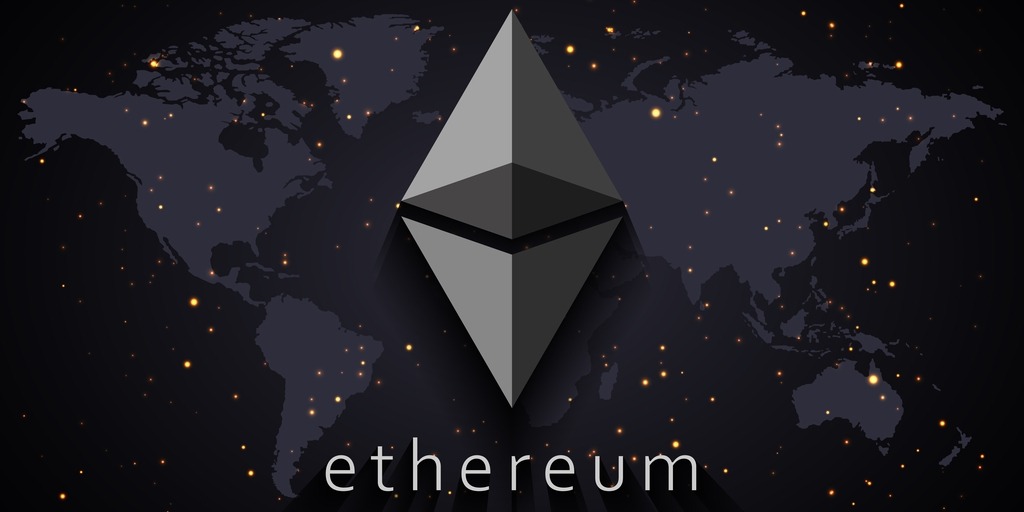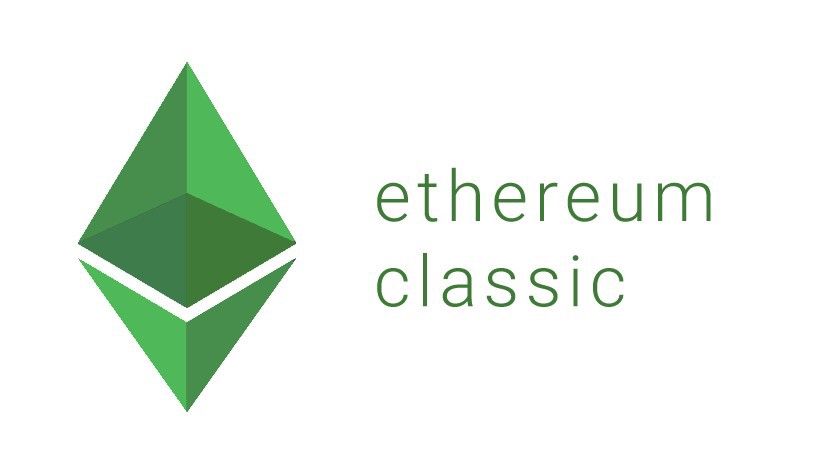Top 9 Historical Moments In The Ethereum Scalability Story And The Monumental Evolution Of Rollups
Ethereum is a decentralized blockchain platform and cryptocurrency that enables the creation and execution of smart contracts and decentralized applications (DApps). Launched in 2015 by Vitalik Buterin, Ethereum serves as a global, open-source platform that extends the capabilities of blockchain beyond simple peer-to-peer transactions.
At its core, Ethereum operates on a decentralized network of nodes, each maintaining a copy of the blockchain. It utilizes a proof-of-stake consensus mechanism, transitioning from the energy-intensive proof-of-work used by Bitcoin. Ether (ETH) is the native cryptocurrency of the Ethereum platform, serving as both a means of exchange and a form of “fuel” for executing operations and smart contracts on the network.
Smart contracts are self-executing contracts with the terms directly written into code. They enable trustless and automated execution of agreements, eliminating the need for intermediaries. This functionality has given rise to a wide range of decentralized applications, spanning decentralized finance (DeFi), non-fungible tokens (NFTs), gaming, and more.
Ethereum’s most significant innovation is its Turing-complete scripting language, allowing developers to create complex and customizable applications on the blockchain. This flexibility has led to Ethereum becoming a foundational platform for blockchain development, with a vibrant ecosystem of developers and projects.
Despite its success, it has faced challenges, most notably scalability and high transaction fees. To address these issues, it is undergoing a significant upgrade known as Ethereum 2.0, transitioning to a proof-of-stake consensus mechanism and introducing other improvements to enhance scalability.
Its impact extends beyond its role as a cryptocurrency. It has catalyzed the growth of a decentralized internet, promoting the vision of a trustless and censorship-resistant global network. The platform’s continued evolution, community support, and innovative applications position Ethereum as a leading force in the blockchain space, influencing the broader landscape of decentralized technologies and finance.
Also, read- Ethereum and Retik Finance to outperform Bitcoin in 2024
History of Ethereum scalability

The history of Ethereum scalability and the evolution of rollups is a complex narrative that spans several years. Here is a guide to understanding the key milestones and developments in this journey:
1. Early Scalability Challenges (2015-2018):
- Ethereum’s early years were marked by significant growth, but scalability challenges became evident as the network faced congestion and rising gas fees. The limitations of Ethereum’s proof-of-work consensus mechanism hindered its ability to handle a high volume of transactions efficiently.
2. Introduction of Layer 2 Solutions (2018-2019):
- In response to scalability issues, discussions around Layer 2 scaling solutions gained momentum. The concept of Layer 2 involves processing transactions off the main Ethereum chain to reduce congestion. Plasma, state channels, and other Layer 2 solutions were explored during this period.
3. Emergence of Rollups (2019-2020):
- Rollups, a type of Layer 2 scaling solution, gained prominence for their potential to provide scalability without compromising security. Optimistic Rollups and zk-rollups emerged as two major categories. Optimistic Rollups use optimistic execution off-chain, with a dispute mechanism on-chain. zk-rollups leverage zero-knowledge proofs for efficient transaction validation.
4. Debut of Optimistic Ethereum (2020):
- Optimistic Ethereum, an implementation of Optimistic Rollups, was introduced to the Ethereum community. It aimed to improve scalability by enabling faster and cheaper transactions, addressing concerns related to high gas fees on the Ethereum mainnet.
5. zkSync and StarkWare (2020-2021):
- zkSync, a zk-rollup solution, was launched, offering users the benefits of zero-knowledge proofs for transaction validation. StarkWare also gained attention, providing scalability solutions with a focus on both payments and smart contracts.
6. Ethereum 2.0 Development (2018-present):
- Ethereum 2.0, a comprehensive upgrade, began development to address scalability through the transition from a proof-of-work to a proof-of-stake consensus mechanism. The upgrade is being implemented in multiple phases, with the Beacon Chain already live.
7. Widespread Adoption of Rollups (2021-present):
- The Ethereum community increasingly embraced rollups as a viable scalability solution. Projects like Arbitrum, Optimism, zkSync, and others gained traction, with numerous decentralized applications (DApps) and projects integrating these Layer 2 solutions to improve user experience and reduce transaction costs.
8. Ethereum London Hard Fork (2021):
- The London Hard Fork implemented Ethereum Improvement Proposals (EIPs), including EIP-1559, which introduced a new fee structure and burned a portion of transaction fees, impacting the economics of Ether and addressing some fee-related concerns.
9. Ongoing Developments and Research (2021-present):
- Ongoing research and development efforts continue to refine existing Layer 2 solutions and explore new scalability solutions. The community is actively working on optimizing gas fees, improving security, and enhancing the overall performance of the network.
Understanding the history of scalability and the evolution of rollups provides valuable insights into the challenges faced by the blockchain and the innovative solutions developed to overcome them. As progresses, the implementation of Ethereum 2.0 and the continuous improvement of Layer 2 solutions are expected to further enhance the scalability and sustainability of the network.
Our Father, who art in @base heaven!
— NANO (@Bluenanocrypt) January 25, 2024
Give us daily green candles and forgive thoose who didnt apply to WL as we forgive those who sell!
Lead us not into adultery and save us from red candles.#BASEGOD @tybasegod @base #Ethereum #pump pic.twitter.com/EsKqwwYpFw
Benefits of Ethereum scalability and the evolution of rollups

The evolution of Ethereum scalability, particularly with the advent of rollups, brings several benefits to the Ethereum ecosystem. Here are some key advantages:
- Increased Transaction Throughput:
- The scalability solutions, especially rollups, significantly increase the transaction throughput by processing transactions off-chain. This leads to faster confirmation times and the ability to handle a higher volume of transactions simultaneously, addressing one of the major limitations of the mainnet.
- Reduced Transaction Costs:
- The introduction of rollups helps reduce transaction costs associated with interacting with decentralized applications (DApps) and executing transactions on the network. By moving computational work off-chain, users experience lower gas fees, making Ethereum more cost-effective for various use cases.
- Improved User Experience:
- Enhanced scalability directly contributes to a better user experience. Users benefit from quicker confirmation times, lower fees, and smoother interaction with DApps, making decentralized applications more accessible and user-friendly.
- Efficient Smart Contract Execution:
- Rollups, including Optimistic Rollups and zk-rollups, enable more efficient execution of smart contracts. Offloading computational work to Layer 2 solutions allows for complex smart contract logic to be processed off-chain, reducing the computational load on the Ethereum mainnet.
- Broader Adoption of Decentralized Finance (DeFi):
- The scalability improvements brought about by rollups have a positive impact on the decentralized finance (DeFi) ecosystem. Lower transaction costs and faster confirmation times make DeFi protocols more attractive to users, potentially leading to increased adoption and growth in the DeFi space.
- Energy Efficiency:
- Layer 2 solutions contribute to the overall energy efficiency of the Ethereum network. By processing transactions off-chain, the computational load on the mainnet is reduced, aligning with the broader industry trend towards more sustainable and eco-friendly blockchain solutions.
- Interoperability and Cross-Chain Transactions:
- The scalability solutions, including rollups, facilitate interoperability between different blockchain networks. Users can seamlessly transfer assets and information between Layer 2 and Layer 1, fostering collaboration and connectivity in the broader blockchain ecosystem.
- Incentives for Developers and Users:
- The adoption of scalability solutions creates incentives for developers and users to actively participate in the ecosystem. Reduced fees, faster confirmation times, and overall improvements in the user experience attract more stakeholders, contributing to the vibrancy of the community.
- Privacy Enhancements:
- Certain rollup solutions, particularly zk-rollups, contribute to privacy enhancements by leveraging zero-knowledge proofs. This ensures the confidentiality of transactions and sensitive data, addressing privacy concerns and expanding the range of applications that can be built on Ethereum.
- Long-Term Viability and Sustainability:
- The evolution of scalability through rollups ensures the long-term viability and sustainability of the network. As the blockchain ecosystem continues to grow, scalability solutions play a crucial role in accommodating increasing demand and maintaining a robust and efficient platform
Conclusion
In conclusion, the evolution of scalability, marked by the introduction and adoption of rollup solutions, represents a significant leap forward for the ecosystem. The benefits derived from these advancements are transformative and address key challenges that have been inherent in blockchain technology. This journey toward scalability not only improves the performance of the network but also enhances the overall user experience, making decentralized applications (DApps) more accessible and efficient.
The increased transaction throughput achieved through rollups translates into faster confirmation times and the capacity to handle a higher volume of transactions, laying the foundation for the widespread adoption of Ethereum in various industries. Lower transaction costs make more economically viable, fostering greater participation from users and developers. This reduction in fees, combined with improved user experience, contributes to a more seamless interaction with decentralized applications, encouraging a broader user base.
Rollups enable the efficient execution of smart contracts, facilitating complex logic off-chain and alleviating the computational burden on the Ethereum mainnet. This efficiency not only enhances the capabilities of existing decentralized applications but also opens the door to new possibilities in decentralized finance (DeFi), non-fungible tokens (NFTs), and beyond.
The energy efficiency introduced by off-chain processing aligns with the growing emphasis on sustainability in the blockchain industry, addressing concerns related to the environmental impact of traditional proof-of-work consensus mechanisms.
Interoperability and cross-chain transactions, supported by rollup solutions, foster collaboration between different blockchain networks, contributing to the development of a more interconnected and collaborative blockchain ecosystem.
Incentives for developers and users, including reduced fees and improved privacy, create a positive feedback loop that encourages active participation in the Ethereum community. The privacy enhancements provided by certain rollup solutions, particularly zk-rollups, contribute to the confidentiality of transactions, expanding the range of applications that can be built on Ethereum.
Ultimately, the benefits of Ethereum scalability and the evolution of rollups go beyond immediate improvements; they play a crucial role in ensuring the long-term viability and sustainability of the Ethereum network. As Ethereum continues to evolve, scalability solutions remain at the forefront, shaping the future of decentralized technologies and contributing to the maturation of the broader blockchain ecosystem.
Stay informed with daily updates from Blockchain Magazine on Google News. Click here to follow us and mark as favorite: [Blockchain Magazine on Google News].
Get Blockchain Insights In Inbox
Stay ahead of the curve with expert analysis and market updates.
latest from tech
Disclaimer: Any post shared by a third-party agency are sponsored and Blockchain Magazine has no views on any such posts. The views and opinions expressed in this post are those of the clients and do not necessarily reflect the official policy or position of Blockchain Magazine. The information provided in this post is for informational purposes only and should not be considered as financial, investment, or professional advice. Blockchain Magazine does not endorse or promote any specific products, services, or companies mentioned in this posts. Readers are encouraged to conduct their own research and consult with a qualified professional before making any financial decisions. The featured image used is just a creative depiction of the title and it does not intend to hurt sentiments of any person or institution. If it hurts anyone sentiments, please do not hesitate to reach out to Blockchain Magazine.

 Bitcoin
Bitcoin  Ethereum
Ethereum  XRP
XRP  Tether
Tether  Solana
Solana  USDC
USDC  Dogecoin
Dogecoin  Cardano
Cardano  Lido Staked Ether
Lido Staked Ether  TRON
TRON  Wrapped Bitcoin
Wrapped Bitcoin  Chainlink
Chainlink  Wrapped stETH
Wrapped stETH  Avalanche
Avalanche  Sui
Sui  Stellar
Stellar  Litecoin
Litecoin  Toncoin
Toncoin  Shiba Inu
Shiba Inu  Hedera
Hedera  LEO Token
LEO Token  USDS
USDS  Hyperliquid
Hyperliquid  Polkadot
Polkadot  WETH
WETH  MANTRA
MANTRA  Bitcoin Cash
Bitcoin Cash  Bitget Token
Bitget Token  Ethena USDe
Ethena USDe  Wrapped eETH
Wrapped eETH  Uniswap
Uniswap  Monero
Monero  NEAR Protocol
NEAR Protocol  Pepe
Pepe  WhiteBIT Coin
WhiteBIT Coin  Aave
Aave  Bittensor
Bittensor  Ondo
Ondo  Aptos
Aptos  Internet Computer
Internet Computer  Dai
Dai  Official Trump
Official Trump  Ethereum Classic
Ethereum Classic  Mantle
Mantle  Tokenize Xchange
Tokenize Xchange  OKB
OKB  Gate
Gate  sUSDS
sUSDS  Sonic (prev. FTM)
Sonic (prev. FTM) 




